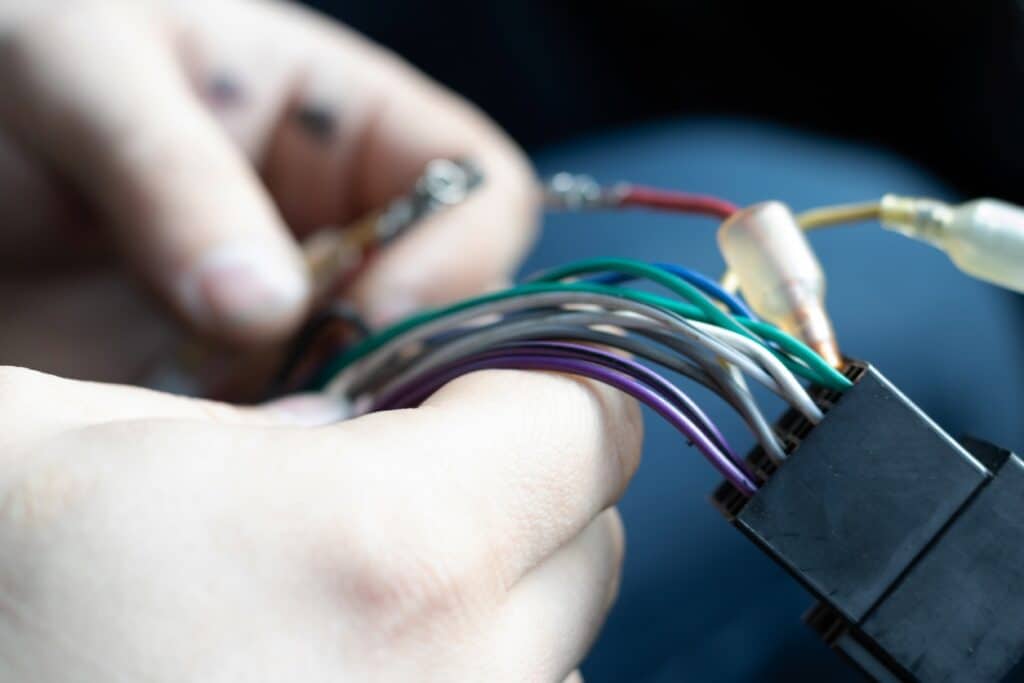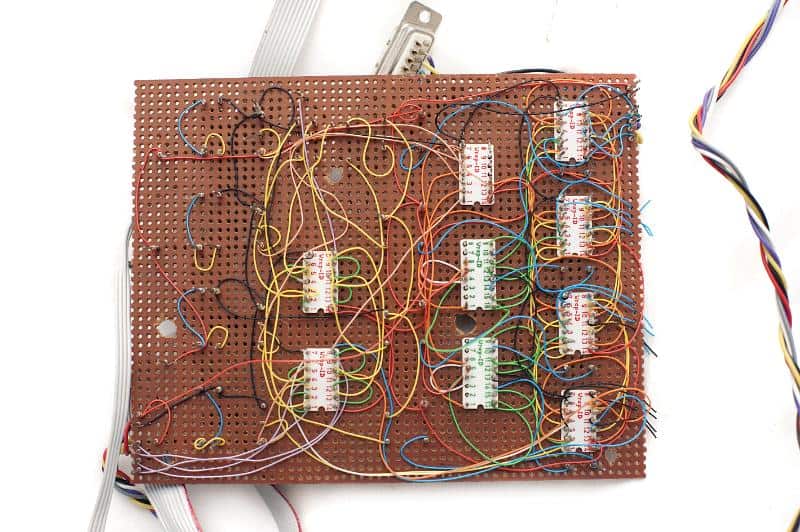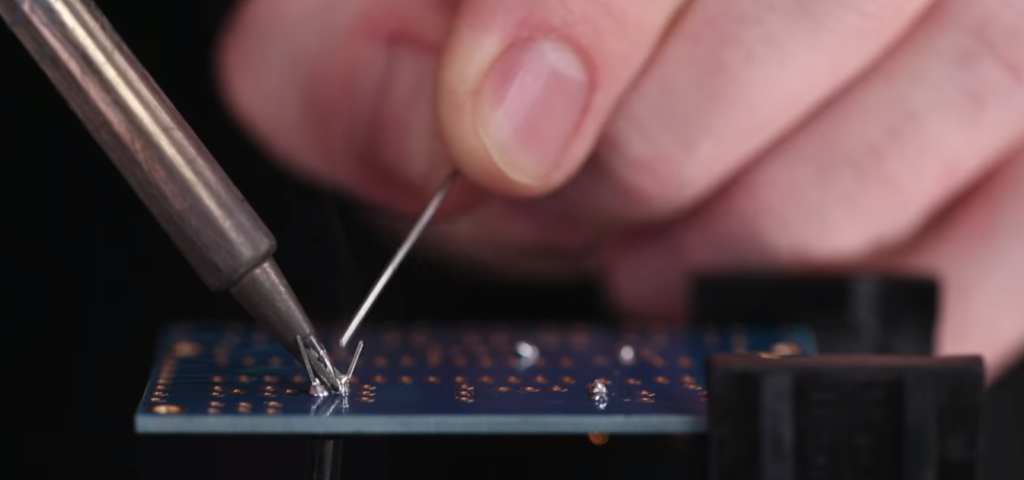Wire harness and cable assembly are two critical components in the manufacturing process of various electronic and mechanical devices. Wire harnesses are essentially a collection of wires that are bundled together and routed through a device. These harnesses are used to transmit power and information between different components of a device. Cable assemblies, on the other hand, are a group of cables that are connected together to form a single unit. They are commonly used in communication and data transfer applications.
Wire harness and cable assembly play a crucial role in the manufacturing process of various industries, including aerospace, automotive, and medical equipment. They provide a reliable and efficient way to transmit power and information between different components of a device. The manufacturing process of wire harness and cable assembly involves various steps, including wire cutting, stripping, crimping, and soldering. The quality of these assemblies is critical, as any defects can result in device failure or malfunction.
In this article, we will discuss the importance of wire harness and cable assembly in the manufacturing process of various devices. We will also explore the manufacturing process of these assemblies and the different types of wire harnesses and cable assemblies available.

Wire Harness Assembly
Definition
Wire harness assembly is the process of combining individual wires and cables into a single unit that can transmit electrical power or signals. The wires are twisted, crimped, or soldered together and then covered with a protective sheath to prevent damage. Wire harnesses are used in a variety of industries, including automotive, aerospace, and telecommunications.
Types
There are several types of wire harnesses, including:
- Power harnesses: used to transmit high voltage power
- Signal harnesses: used to transmit low voltage signals
- Hybrid harnesses: a combination of power and signal harnesses
- Custom harnesses: designed to meet specific requirements
Applications
Wire harnesses are used in a variety of applications, including:
- Automotive: used in vehicles to connect electrical components
- Aerospace: used in aircraft to transmit power and signals
- Medical: used in medical devices to transmit signals and power
- Telecommunications: used in communication equipment to transmit signals
Wire harnesses offer several advantages, including reduced installation time, improved reliability, and reduced risk of electrical interference. They also make it easier to troubleshoot and repair electrical systems.
In summary, wire harness assembly is a crucial process used in many industries to transmit electrical power and signals. The different types of wire harnesses and their applications make them a versatile and reliable solution for many electrical systems.
Cable Assembly

Definition
A cable assembly is a group of cables or wires that are arranged and bound together to transmit electrical signals or power. The cables are typically terminated with connectors or plugs that are compatible with the intended device or system. Cable assemblies are used in a wide range of industries, including automotive, aerospace, medical, and telecommunications.
Types
There are several types of cable assemblies, including:
- Ribbon Cable Assembly: This type of cable assembly consists of multiple wires that are arranged in parallel and held together by a flat ribbon-shaped cable. Ribbon cable assemblies are commonly used in computers and other electronic devices.
- Coaxial Cable Assembly: This type of cable assembly consists of a central conductor that is surrounded by a dielectric insulator and a metallic shield. Coaxial cable assemblies are commonly used in high-frequency applications, such as telecommunications and broadcasting.
- Power Cable Assembly: This type of cable assembly is designed to transmit high-voltage power from a source to a device. Power cable assemblies are commonly used in the automotive and industrial sectors.
Applications
Cable assemblies are used in a wide range of applications, including:
- Automotive: Cable assemblies are used in vehicles to transmit power and signals to various components, such as the engine, transmission, and entertainment system.
- Aerospace: Cable assemblies are used in aircraft to transmit power and signals to various components, such as the avionics, lighting, and communication systems.
- Medical: Cable assemblies are used in medical devices to transmit signals and power to various sensors, monitors, and other components.
- Telecommunications: Cable assemblies are used in telecommunications equipment to transmit signals and power to various components, such as antennas, modems, and routers.
Overall, cable assemblies are an essential component in many industries and applications, providing a reliable and efficient way to transmit power and signals.
Wire Harness vs. Cable Assembly
Differences
Wire harness and cable assembly are often used interchangeably, but they are different in a few ways. A wire harness is a bundle of wires or cables that are bound together with a sleeve or tape, while a cable assembly is a single cable with connectors on each end.
Wire harnesses are commonly used in automotive, aerospace, and industrial applications where multiple wires need to be routed together. Cable assemblies, on the other hand, are used for data transfer, power, and signal transmission.
Another key difference is that wire harnesses are typically custom-made for a specific application, while cable assemblies are often off-the-shelf products that can be easily modified to fit a particular need.
Similarities
Despite their differences, wire harnesses and cable assemblies share some similarities. Both are used to organize and protect wires and cables, and both can include connectors and other components.
Both wire harnesses and cable assemblies require careful design and manufacturing to ensure that they meet the required specifications and standards. They also need to be tested thoroughly to ensure that they are safe and reliable.
In summary, wire harnesses and cable assemblies are similar in that they both provide a means of organizing and protecting wires and cables, but they differ in their purpose and construction. Wire harnesses are typically used for routing multiple wires together, while cable assemblies are used for data transfer, power, and signal transmission.
Wire Harness and Cable Assembly Manufacturing

Process
Wire harness and cable assembly manufacturing is a complex process that involves multiple steps. The first step is to design the harness or assembly based on the customer’s specifications. This involves selecting the appropriate wires, connectors, terminals, and other components.
Once the design is finalized, the next step is to cut and strip the wires to the required length. The wires are then crimped onto terminals and connectors using specialized tools. The harness or assembly is then assembled and routed according to the design.
After assembly, the harness or assembly is tested for continuity and other electrical properties. Any defects are identified and corrected, and the final product is inspected for quality.
Materials
Wire harness and cable assembly manufacturing requires a variety of materials, including wires, connectors, terminals, and other components. The selection of materials depends on the application and the customer’s specifications.
Wires are typically made of copper or aluminum and come in various gauges and colors. Connectors and terminals are made of various materials, including brass, stainless steel, and plastic. Other components, such as heat shrink tubing and conduit, are also used to protect and organize the wires and cables.
Quality Control
Quality control is an essential part of wire harness and cable assembly manufacturing. Each step of the process is carefully monitored to ensure that the final product meets the customer’s specifications and industry standards.
Quality control measures include visual inspections, electrical testing, and documentation. Any defects or non-conformities are identified and corrected, and the final product is inspected for quality before shipment.
In conclusion, wire harness and cable assembly manufacturing is a complex process that requires attention to detail and strict quality control measures. By using the right materials and following a well-defined process, manufacturers can produce high-quality harnesses and assemblies that meet the needs of their customers.
Wire Harness and Cable Assembly Testing
Methods
Testing wire harnesses and cable assemblies is a crucial step in ensuring their reliability and safety. There are various methods used to test wire harnesses and cable assemblies, including:
-
Visual Inspection: This involves inspecting the wire harness and cable assembly for any physical damage, such as cuts, abrasions, or loose connections.
-
Continuity Testing: This involves checking the electrical continuity of the wires in the harness to ensure that they are properly connected.
-
Dielectric Testing: This involves testing the insulation of the wires to ensure that they are not damaged or compromised.
-
Environmental Testing: This involves testing the wire harness and cable assembly under various environmental conditions, such as temperature, humidity, and vibration, to ensure that they can withstand these conditions.
Standards
There are various standards that wire harnesses and cable assemblies must meet to ensure their reliability and safety. Some of the most common standards include:
-
IPC/WHMA-A-620: This is the industry standard for cable and wire harness assembly requirements and acceptance.
-
UL 508A: This is the standard for industrial control panels, which includes requirements for wire harnesses and cable assemblies.
-
MIL-STD-810: This is the standard for environmental testing, which includes testing wire harnesses and cable assemblies under various environmental conditions.
By testing wire harnesses and cable assemblies using these methods and standards, manufacturers can ensure that their products are reliable and safe for use in a variety of applications.
Wire Harness and Cable Assembly Maintenance

Importance
Proper maintenance of wire harness and cable assembly is crucial to ensure optimal performance, safety, and longevity of electrical systems. Regular maintenance helps prevent costly repairs and downtime, as well as ensures compliance with safety regulations.
Best Practices
Here are some best practices for wire harness and cable assembly maintenance:
-
Inspect regularly: Regular inspections can help detect any issues early on, preventing further damage and potential safety hazards.
-
Keep clean: Dirt, dust, and other debris can accumulate on wire harness and cable assembly, leading to corrosion and other issues. Regular cleaning can help prevent these problems.
-
Check connections: Loose or corroded connections can cause electrical issues, so it’s important to check and tighten connections regularly.
-
Use appropriate tools: When performing maintenance on wire harness and cable assembly, it’s important to use appropriate tools and equipment to avoid damaging the components.
-
Follow manufacturer’s instructions: Always follow the manufacturer’s instructions for maintenance and repair of wire harness and cable assembly to ensure optimal performance and safety.
By following these best practices, you can help ensure the optimal performance, safety, and longevity of your electrical systems.

